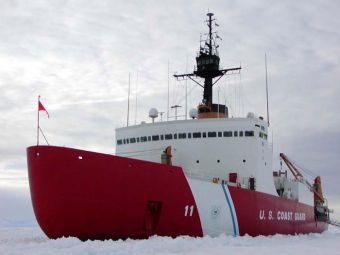The following is the text of a news report from the Navy League:
(WASHINGTON) — Lawmakers have proposed legislation that would assure the Coast Guard does not have a capability gap while a proposed new icebreaker is being built.
Sens. Maria Cantwell, D-Wash., Dan Sullivan, R-Alaska, and Patty Murray, D-Wash., introduced the Coast Guard Icebreaker Recapitalization Act last week that would authorize $150 million for the service to refurbish Polar Sea, a heavy polar icebreaker that has been out of service since 2010 after suffering a massive engine failure.
“Investing in the Coast Guard’s polar icebreaker fleet is critically important to maritime commerce, national security, scientific research, and basic oceangoing safety. I’m proud to keep working to make sure our country has the resources they need to protect our national interests,” Murray said.
The service currently has two working icebreakers, Polar Star and Healy, but the latter is used mainly for scientific research missions. In 2010, the three-decades-old Polar Star underwent a four-year $57 million overhaul to expand its life another decade.
The Coast Guard is statutorily obligated to provide icebreaking capability for the United States and, specifically, for the U.S. Department of Defense.
Cantwell’s office said the bill has been referred to the Senate Committee on Commerce for further consideration. They are working with members of the House of Representatives to introduce companion legislation.
“Refurbishing the Polar Sea must be a priority, and we are running out of time,” said her press office.
Sullivan, who represents a state where most icebreaking missions take place, said he’s a strong supporter of rebuilding the icebreaking fleet.
“The United States continues to be late to the game on the urgent need for an expanded fleet of Coast Guard icebreakers,” said the freshman senator.
Key provisions of the Coast Guard Icebreaker Recapitalization Act include requiring the secretary of Department of Homeland Security, in consultation with the secretary of the Navy, to develop a plan to meet the Coast Guard statutory missions in the polar regions while also requiring a Government Accountability Office study on international funding models for government icebreaking services.
This piece of legislation also could act as a stopgap measure as the service builds its first new heavy polar icebreaker in decades. The Coast Guard’s fiscal 2017 budget request asks for $150 million to complete the design work for the new icebreaker and speed up the acquisition process. It’s estimated the total cost could hover around $1 billion while taking more a decade to build.
Based on the life extension timeline for Polar Star, and how long it would take the service to build a new icebreaker, the Coast Guard could be looking at a capability gap in the polar region if nothing is done.
Lawmakers have struggled for years to find a suitable way to fund and expand the Coast Guard’s icebreaker fleet, but budget cuts and higher-priority programs pushed it to the side. Adm. Paul Zukunft, Coast Guard commandant, has been adamant about the need to recapitalize the icebreaker fleet.

